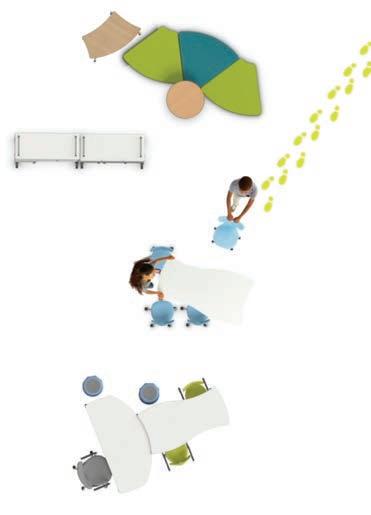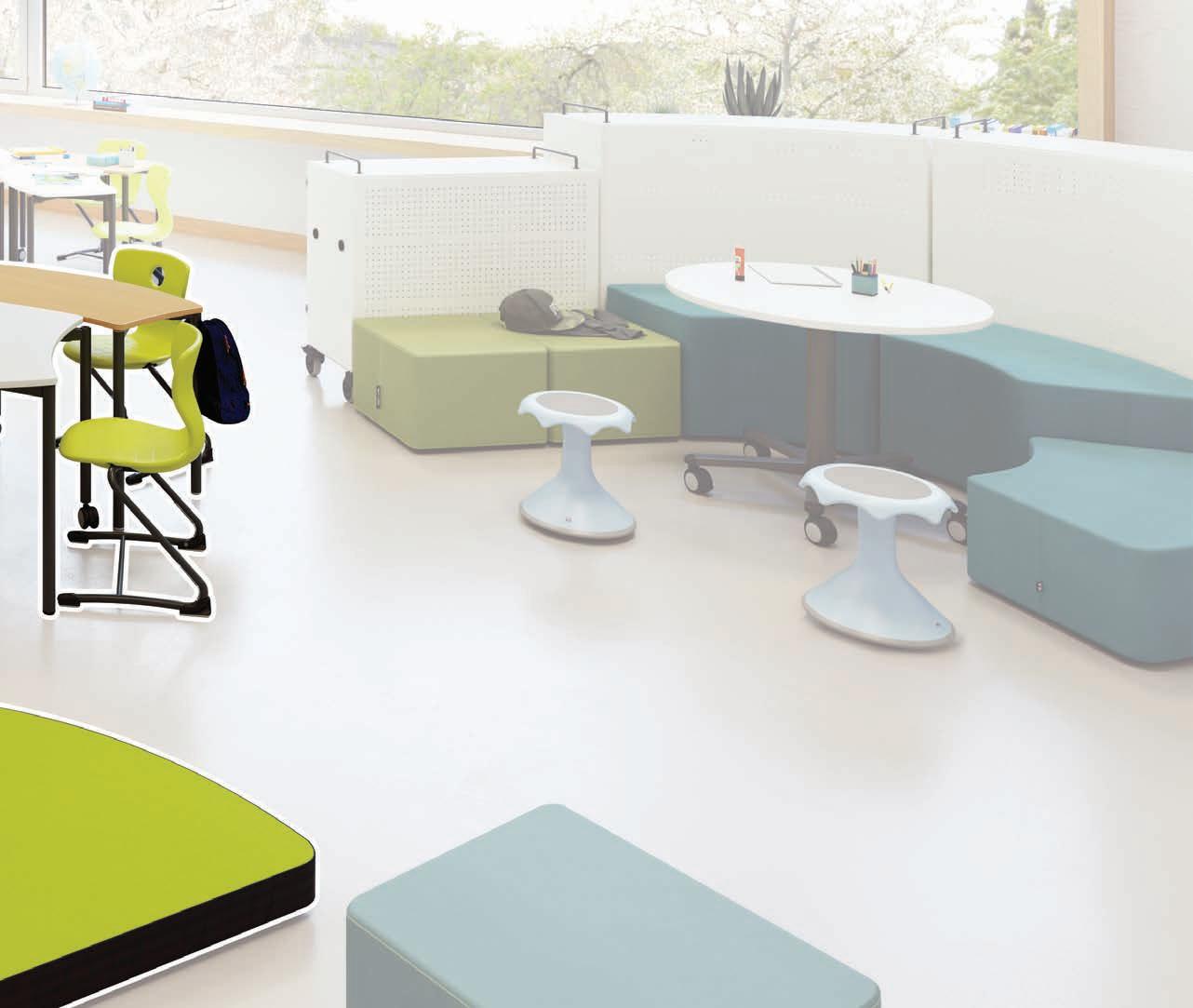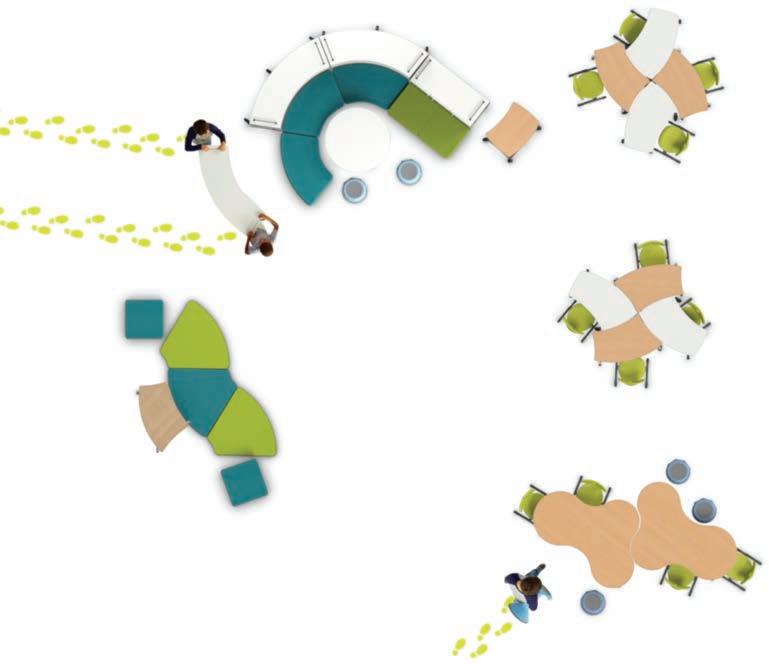
2 minute read
LITERACY LEARNING STATIONS

Literacy centers are physical areas or stations set up for students to work independently or collaboratively for specific learning purposes, such as meeting literacy goals. Learning stations are designed to provide appropriate materials, be mobile, and can be both temporary or permanent. With agile furnishings, teachers can quickly implement literacy stations with multiple group configurations while simultaneously engaging in direct one-to-one instruction.
A single classroom has a wide range of independent literacy abilities. They range significantly, including English language learners, gifted students, and those with special needs. During literacy stations, students rotate through specialized zones where they focus on literacy-based activities in small groups or independently, while the teacher has the opportunity to pull individual students or small groups for targeted literacy instruction. Targeted reading instruction helps learners develop self-regulation skills and allows them to make text-to-self connections, while exploring individual and community identities through stories.
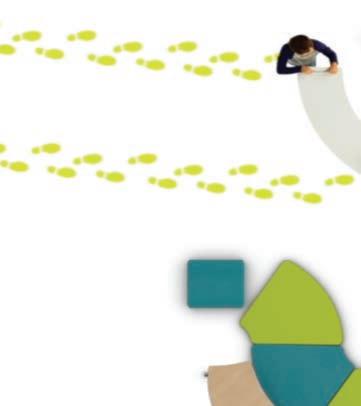
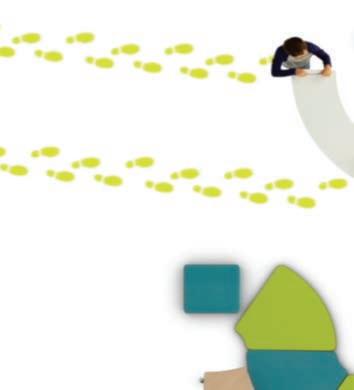
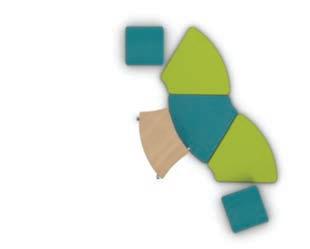

Schools and teachers can meet the broad and various needs of their diverse learners more effectively in classrooms with flexible furniture. When teachers can flexibly arrange their space, they can efficiently gather data, progress monitor for content mastery, and assess learning loss in both fluency and comprehension skills. This type of agility in the classroom helps teachers personalize and differentiate their literacy instruction.


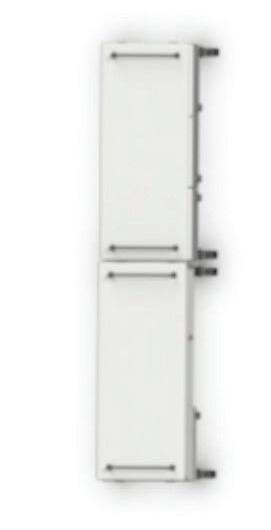
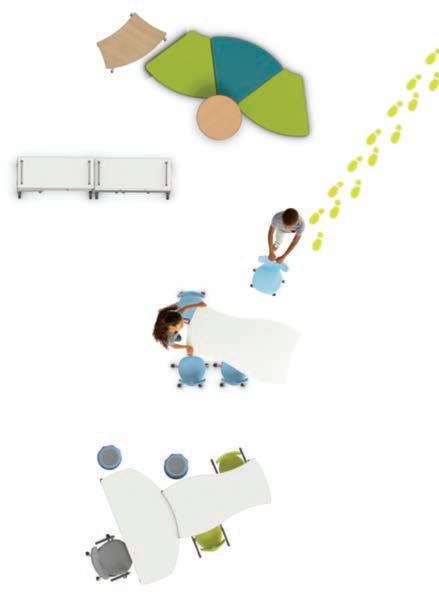
Literacy learning stations in motion: let’s walk through an elementary classroom using VS America’s agile furniture...
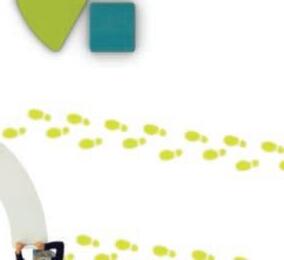
1.
First, a teacher engages the whole group of students in a shared reading exercise. The students come together in front of the teacher using various soft seating options, Hokki stools, and sitting on the floor.
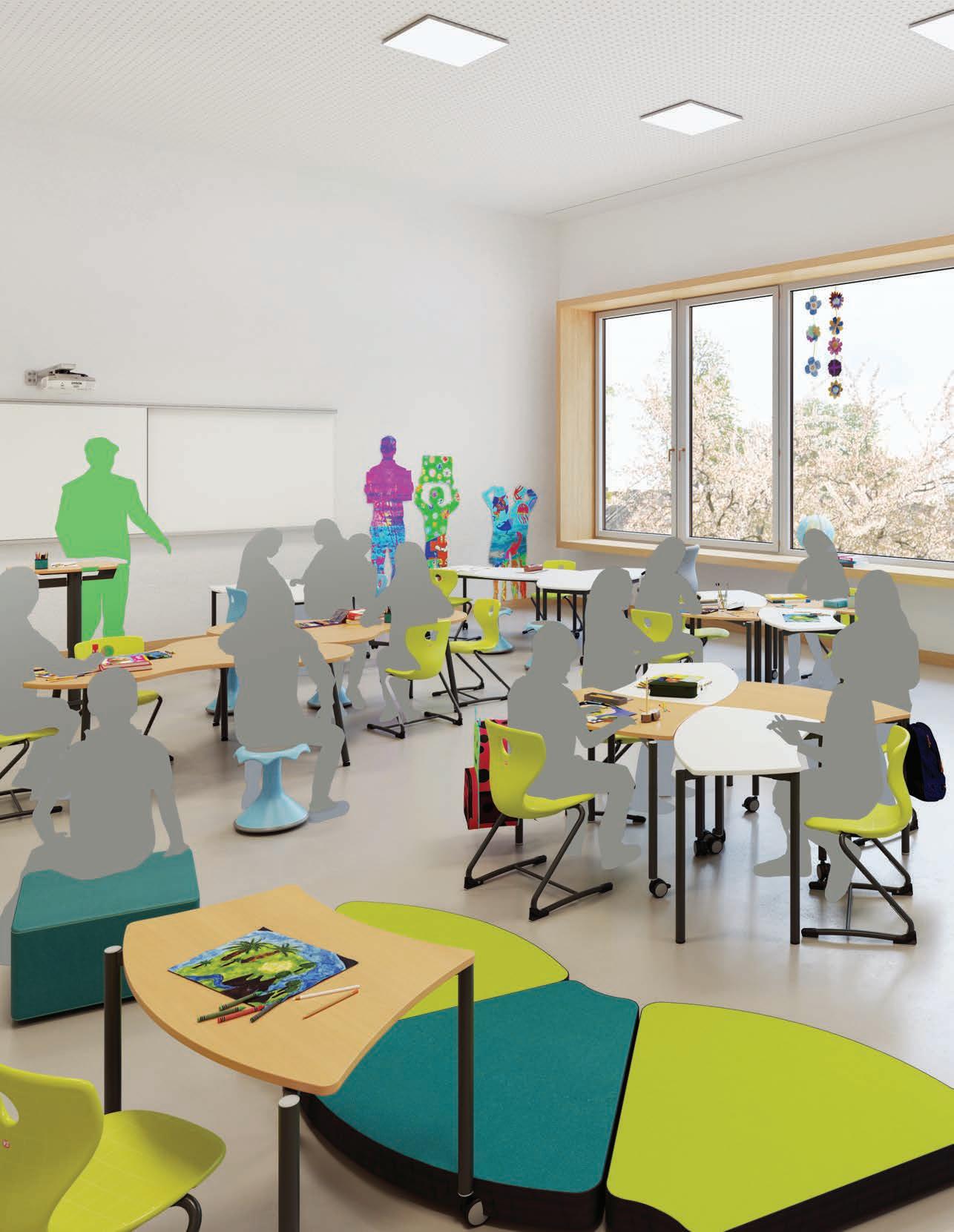
2.
After the story, students participate in a literacy minilesson for 10-15 minutes. The mini-lesson prepares students to then move into literacy stations. There are designated or selfselected zones for independent reading, reading buddies, and small group conferencing with the teacher.

3.
Agile furniture means students scatter to various independent reading spaces throughout the classroom with soft seating. Reading buddies move to designated zones with Shift+ ThumbPrint tables arranged for students to engage in specific paired reading dialogue activities. The teacher holds reading conferences in the classroom library which provides privacy and acoustical support for their one-to-one conference.
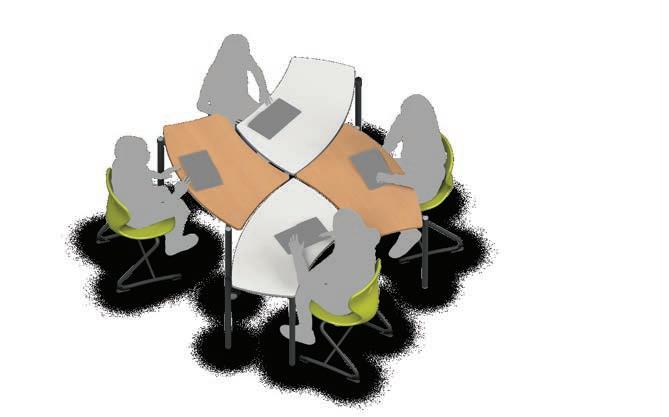
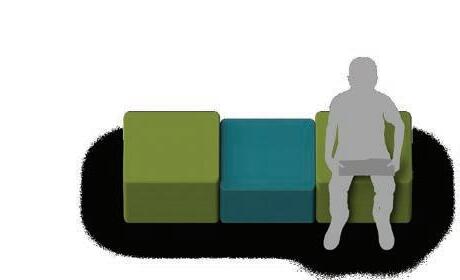
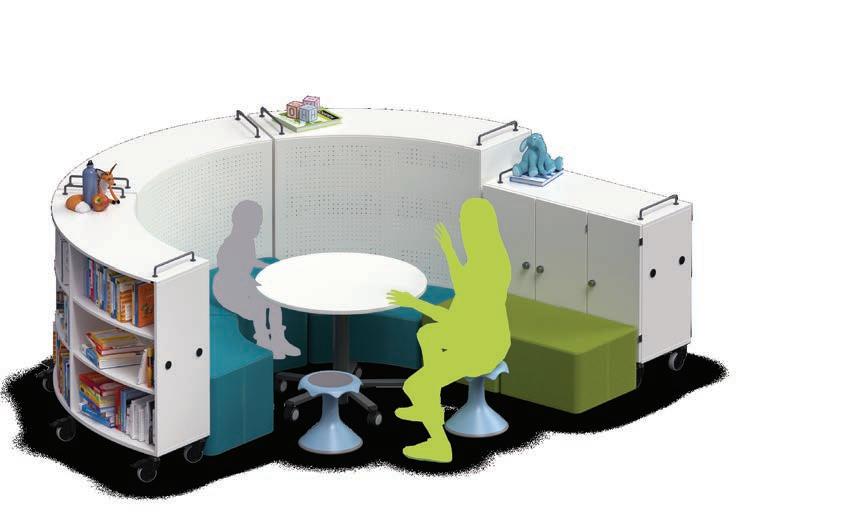
4.
Students rotate through independent reading, reading buddies, and meeting with the teacher over a specific time period. Students have the autonomy to change positions, stand, sit, wiggle, and bounce because minds and bodies are always in motion.
7.
While this is happening the teacher is able to meet with a student about a sensitive matter privately in the nook space provided by curved bookshelves and soft seating of the classroom library.
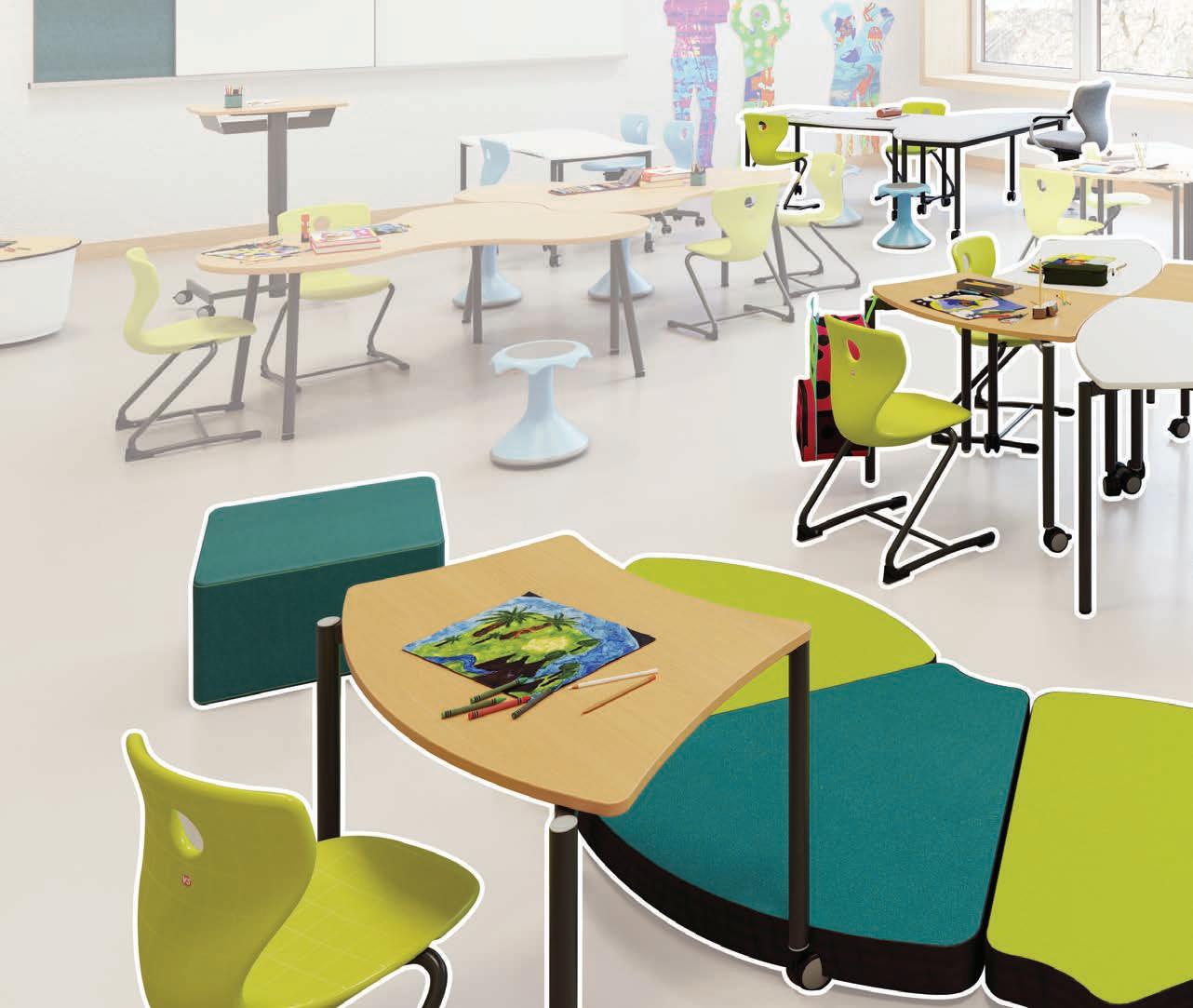
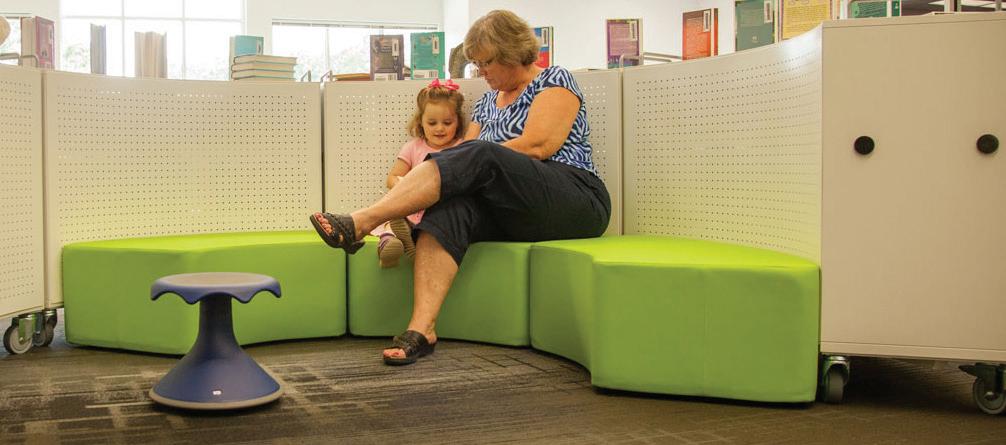
6.
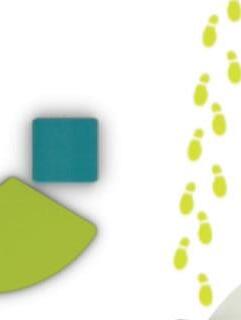
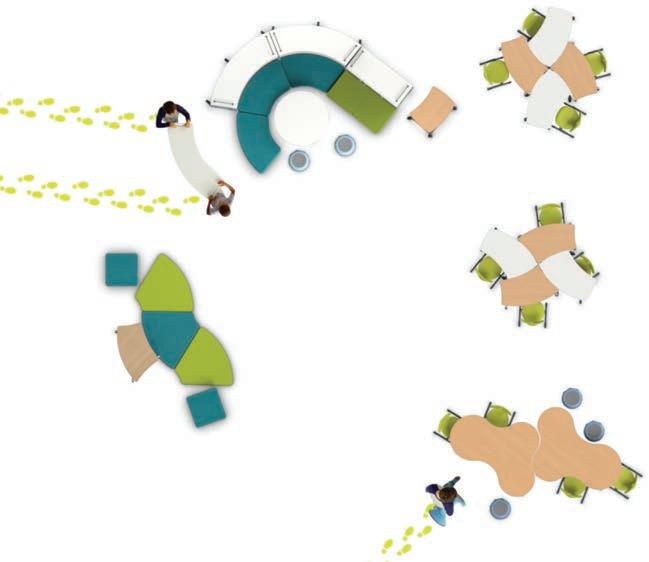
At the end of the 50 minute time period, students move the classroom back to the original zero space set up before leaving for specials in another part of the building.

5.
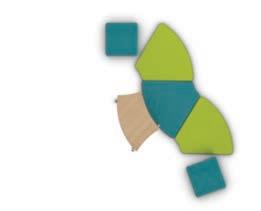
Finally, the teacher brings the whole group back and closes with a debrief of the activities. Students again use soft seating and Hokki stools to listen to the story. Students fidget, tap, and squirm comfortably on the variety of seating options while actively participating.
